EVs, Charging Stations Will Evolve Simultaneously: Volttic CEO
- By Sharad Matade
- February 25, 2021

Non-availability of charging stations is always blamed for the slow adaption of electric vehicles in India. However, the limited numbers of EVs running on the road keep charging station companies in limbo. For charging station operators, especially private ones, aggressive business investments are still a big gamble. However, according to Varun Chaturvedi, MD & CEO, Volttic, charging stations’ numbers depend on EVs’ penetration in India. “Instead of discussing the classic chicken and egg problem and comparing the Indian EV market with the western market, we need to understand the penetration of EVs and charging stations will happen simultaneously,” says Chaturvedi.
The electric vehicle charging stations market is expected to exceed more than USD 30 billion by 2024 at a CAGR of 40%. As per a rough estimation, currently, there are around 1,000 Bharat DC001 charging stations and over 1,000 Bharat AC001 charging stations are available in India.
 The Indian Government also announced its intention to set up at least one e-charging kiosk at around 69,000 petrol stations across India.
The Indian Government also announced its intention to set up at least one e-charging kiosk at around 69,000 petrol stations across India.
Volttic is a leading charge point operator (CPO) in India running EV charging stations pan India. The company provides complete end-to-end EV charging solutions for home and commercial segments.
“Volttic focuses a business strategy which benefits for all- OEs, EV owners and us,” adds Chaturvedi.
The company is consciously setting up EV charging stations with customised solutions on demand in the country. “Rather than putting charging infrastructures where nobody comes, we are tying up with people who are ready to use our solutions,” he explains.
The company is currently focusing on fleet operators, which Chaturvedi predicts, will have faster growth in India when it comes to the EV adoption. As of now, Volttic’s dedicated charging and public charging stations ratio is 80 percent and 20 percent, respectively.
In the B2B segment, Volttic’s clients are employee transporters, while in the B2C, the company serves taxi fleets.
“We are strategically deploying our charging stations to relieve our customers from range anxiety and carry smooth transportation without breakdown,” he says.
 Having a background of electrical engineering, his core expertise is in electrical equipment, chargers, batteries, and the power sector. Elaborating his decision to venture into the EV charging station business, he says, “In 2016-17, there were hardly any players in the EV charging station business, though it was gaining momentum in Europe and the US. The charging station business was relatively new in India then, and everybody had to start from scratch, which provided equal challenges and opportunities. Being an entrepreneur, you should adopt a business where you have the expertise and control over the technologies. We knew the EV charging station will mostly evolve on as a service.”
Having a background of electrical engineering, his core expertise is in electrical equipment, chargers, batteries, and the power sector. Elaborating his decision to venture into the EV charging station business, he says, “In 2016-17, there were hardly any players in the EV charging station business, though it was gaining momentum in Europe and the US. The charging station business was relatively new in India then, and everybody had to start from scratch, which provided equal challenges and opportunities. Being an entrepreneur, you should adopt a business where you have the expertise and control over the technologies. We knew the EV charging station will mostly evolve on as a service.”
Volttic’s Co-founder, Surendar Pratap Singh, too comes from the electric background, while the other co-founder, Shweta Chaturvedi, hails from the software industry. “Having the background of hardware and software, we are completely self-dependent in the EV charging supply chain,” Chaturvedi adds.
However, challenges are larger in deploying public EV charging stations compared with dedicated ones. Explaining the challenges further, Chaturvedi says, “Generally, two to three days are needed to set up a dedicated EV charging station in a corporate premise as most of the infrastructure such as power supply, wiring and parking space is readily available. However, when it comes to a public domain, we have to spend months scouting a location, then getting power supply from DISCOM takes time as well.”
EV charging takes more time than gasoline refuelling, and EV consumers expect to have charging station points at their preferred locations, time, and price to avoid range anxiety. Chaturvedi added that public EV charging stations should be deployed in public spaces such as malls, restaurants, hotels, shopping complexes and others where they can indulge in other recreational activities while the vehicles are being charged.
The company provides technology-oriented solutions consist of Bharat DC01 & Bharat AC01, CCS2 Chargers & ChadeMo Chargers to serve the clients’ needs. Currently, it operates around 123 charging points AC/ DC mix and plans to order around 50 double guns fast chargers with 100 charging points in the next couple of months. In the next five years by 2025, Volttic aims to have around 5,000 plus machines with double guns. “So, if we talk about charging points, we will have between 10,000 plus charging points in the next five years,” adds Chaturvedi. The company is in the process of executing an order of USD1 million in the next few months.
 On the policy side, he urges a push for private charging players as well. Last year the Government had given in-principle approval to firms, including NTPC, EESL and REIL, to set up 2,600 EV charging stations.
On the policy side, he urges a push for private charging players as well. Last year the Government had given in-principle approval to firms, including NTPC, EESL and REIL, to set up 2,600 EV charging stations.
“Last time, under the FAME-II, subsidies were given to EV charging stations operated by PSUs. This time too, an Expression of Interest (EoI) has been invited for highways and expressways.” However, he advocates that the EV ecosystem should not only depend on subsidies. “We need to come out from the mindset of incentives. Once subsidies are stopped, many nights by flyers vanish from the market,” he says.
Volttic focuses on better utilisation of the EV charging machines to have economic viability in the business.
“If my dedicated charging machines are utilised for ten to twelve hours and public charging stations are utilised for around six to seven hours per day, I can achieve economic viability,” says Chaturvedi.
Volttic’s all EV charging machines are manufactured according to government standards by its strategic partners in India. Deployment and maintenance are taken care of by Volttic. “Software is the backbone of our business. Station monitoring, tariff management, booking slots, navigation, payments and app, everything is managed by in-house software team,” adds Chaturvedi. The company provides public EV charging app with all advance feature set for EV drivers. Easy navigation to nearest charging stations, booking, payment and all transaction details just in a click with Volttic mobile application. The app also provides complete details of charging station and availability for charging slots and many more advance features for EV users.
 Margins in the business widely depend on the operating costs, which again vary from city to city. EV charging stations charge in both ways- per unit (kWH) or hours or minutes basic, and In India, EV charging stations in use the former way to charge tariffs. “Operating cost and subsequently, tariffs depend on many factors. Many states have adopted the EV policy so there are caps on per unit charge, while states that have not adopted the EV policy charge commercial rates per unit. Besides, location rents and machine cost also determine the tariffs. But yes, the tariff has to be lower than per km costs of fossil fuel-driven vehicles. Commercial viability can be achieved if machine utilisation rates are good,” explains Chaturvedi.
Margins in the business widely depend on the operating costs, which again vary from city to city. EV charging stations charge in both ways- per unit (kWH) or hours or minutes basic, and In India, EV charging stations in use the former way to charge tariffs. “Operating cost and subsequently, tariffs depend on many factors. Many states have adopted the EV policy so there are caps on per unit charge, while states that have not adopted the EV policy charge commercial rates per unit. Besides, location rents and machine cost also determine the tariffs. But yes, the tariff has to be lower than per km costs of fossil fuel-driven vehicles. Commercial viability can be achieved if machine utilisation rates are good,” explains Chaturvedi.
Talking on the feasibility of procuring energy from solar, he says, “Again to install a dedicated solar system, you need CAPEX. Even if it is fitted and the machines’ utilisation remains low, where will we dump electricity or inject in the grid at ever lower net metering? However, our ultimate goal is to get energy from renewable resources in future, when we have good hours of machine utilisation to consume dedicated renewable power energy. Also, within city getting rooftop location to develop a 50-70 KW solar plant will be another challenge, so we are more aligned toward our nationwide renewable integration up to 175 GW by 2022 and subsequent more to the coming year.”
As most EV charging station business is being driven by commercial fleet operators, availing value-added services do not bring more business rather bring more liability, thinks Chaturvedi. “Value-added services are good for personal/ individual vehicle owners, whereas commercial fleet operators think of the total cost of operations,” tells Chaturvedi.
 Chaturvedi quotes battery swapping is currently not viable for electric 4W and buses as it needs heavy infrastructure.
Chaturvedi quotes battery swapping is currently not viable for electric 4W and buses as it needs heavy infrastructure.
Moreover, it is not viable unless battery packs and technologies are uniformed in the electric car and buses by all OEMs, which looks very difficult in coming time as well.
“Since Volttic is using only Government approved EV Chargers standard and that are adopted by all OEM of four-wheeler cars and buses, so most of the client are fleet of electric car and buses. For two and three-wheelers, swapping is a more convenient option as most of them currently available in the market do not have the facility to charge fast with DC chargers. So swapping is the way to get a quick top-up by replacing charged batteries,” adds he.
It requires robust infrastructure such as bulk charging system, a software system to get details on batteries. The business is only successful when fleets run over 200 km per day, and there is a good number of volume of 2W & 3W,” says Chaturvedi. However, the company is also exploring options of getting into battery swapping business with two and three-wheeler fleet companies. (MT)
Battery Passport Implementation Beyond EVs To Be Focus Of Barcelona Event
- By MT Bureau
- December 03, 2025
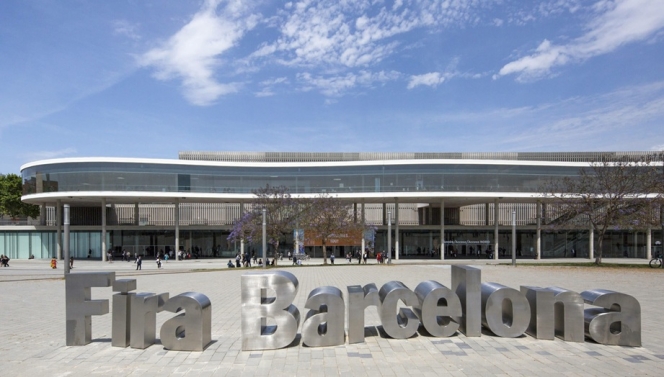
Battery and Energy Storage Europe has announced a programme focused on the EU Battery Passport, a regulatory milestone that becomes mandatory in February 2027. The Barcelona-based event will address the compliance gap for applications beyond the electric vehicle (EV) sector, which have dominated the conversation to date.
The event, taking place on 8th and 9th September 2026 at Fira de Barcelona's Gran Via venue, will focus on solutions and talks for applications that fall within the regulation's scope: stationary energy storage, industrial batteries, grid-scale systems, long-duration energy storage and emerging applications in aerospace, maritime and rail electrification.
With the February 2027 legal requirement date approaching, the programme will bring together industry leaders, technology providers, and policy experts to address the compliance challenges facing these diverse sectors.
The Battery Passport is a digital record documenting a battery's entire lifecycle, from raw material sourcing to production, performance and eventual recycling. From February 2027, it becomes mandatory for all rechargeable EV, industrial and LMT batteries over 2 kWh sold in the EU.
Linked via QR code, the passport will track each battery's complete lifecycle, including composition, carbon footprint and recycled content, fundamentally transforming supply chain transparency and sustainability practices across Europe.
The programme will explore implementation topics including digital infrastructure requirements, data management systems, supply chain integration, verification processes and recycling traceability.
Ken Davies, Conference Programme Director at Battery and Energy Storage Europe, said, "The Battery Passport represents one of the most significant regulatory shifts our industry has faced, yet many companies are still grappling with what implementation actually means for their operations. While the EV sector has dominated the conversation, there's a critical need to address how this regulation applies to stationary storage, industrial applications and the innovative battery technologies powering Europe's energy transition. With the clock ticking toward February 2027, Battery and Energy Storage Europe will shine a light on the practical implementation requirements for these often-overlooked sectors, connecting stakeholders with actionable solutions and bringing together the expertise, technology providers, and collaborative spirit needed to turn compliance into competitive advantage across the full spectrum of battery applications."
- Scania
- Horse Powertrain
- SCA
- hybrid truck
- Aurobay Technologies
- Matias Giannini
- Tony Sandberg
- Ingo Scholten
Scania Selects Horse Powertrain For Range-Extender Truck Pilot In Sweden
- By MT Bureau
- December 03, 2025
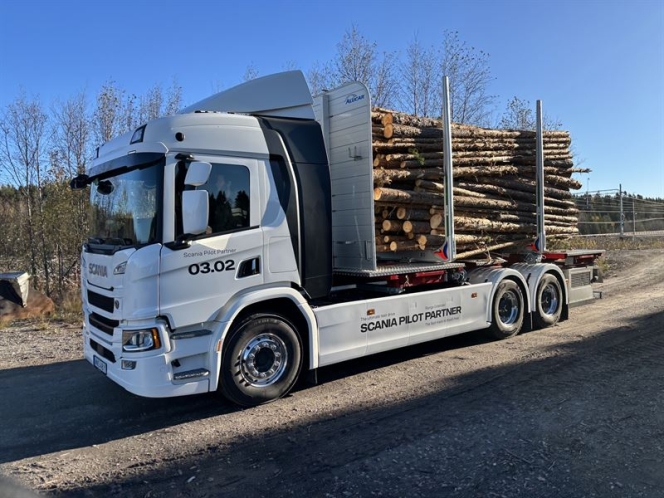
Horse Powertrain has been selected by Scania to provide its range-extender system for a pilot vehicle, currently operating as a heavy-duty timber truck in Sweden. The collaboration is a step in testing hybrid powertrain solutions for demanding transport applications such as forestry logistics.
The pilot is part of the Scania Pilot Partner program and is currently operating in Sweden under SCA, one of Europe’s forestry companies.
The vehicle is built to handle Sweden’s timber routes, transporting heavy loads through remote terrain where access to charging infrastructure remains scarce. By combining a battery-electric drivetrain with the generator designed in Sweden by Horse Powertrain’s division Aurobay Technologies, the truck achieves both long-distance capability and reduced CO2 emissions.
The test route covers approximately 16 km, with an operational target of completing 7–8 rounds per day, comparable to a diesel truck.
The configuration supports the truck’s battery packs with a 120 kW range-extender unit based on Horse Powertrain’s 2.0 litre multi-fuel engine. Acting purely as an onboard charger, the unit supplies electric energy when required during long hauls, temperature extremes, or delays.
Matias Giannini, CEO, Horse Powertrain, said, "Forestry logistics represents one of the toughest challenges for electrification. The forest roads of northern Sweden demand strength, range and reliability. Charging stations are few, but the timber never waits. You can think of our range-extender as a powerbank for a heavy-duty truck: silent, efficient, and always there when you need it. By partnering with Scania and drawing on our engineering excellence, we’re proving how a compact, high-efficiency range-extender enables electric trucks to operate reliably in the most demanding environments. It’s a technology that cuts CO2 now.”
Tony Sandberg, Vice-President at Scania Pilot Partner, added, "What we’re doing in Sweden with Horse Powertrain and SCA builds directly on the 100-day trial we ran together with a logistics partner in Germany earlier this year. That vehicle logged almost 22,000 kilometres and drove more than 90 percent of the time on pure electric power, only using the range-extender when no charging was available. The result was a CO2 reduction of over 90 percent compared with a diesel truck. Those learnings give us a strong foundation as we tailor the system for demanding Nordic timber operations."
Ingo Scholten, Chief Technology Officer, Horse Powertrain and Managing Director Sweden, Aurobay Technologies division, said, “Electrifying heavy-duty routes means understanding what drivers and operators face hour by hour. Long stretches without charging, variable loads and rapidly changing weather. This pilot lets us study those realities directly in day-to-day timber operations. The range-extender’s role is simple. Provide a stable, efficient energy supply so drivers can complete their full shift without interruption and with far lower greenhouse-gas emissions than a traditional diesel truck. The data we gather here will guide how we refine the technology and scale it for wider use across demanding transport applications.”
Horse Powertrain’s modular range-extender architecture builds on the core technology used in its passenger-car and light-commercial hybrid systems, adapted for the higher power output and durability demands of heavy-duty applications. Unlike conventional fixed-speed generator sets, the engine can operate across its full power band, allowing the system to deliver the required output efficiently while keeping fuel consumption, noise and vibration low.
The pilot truck is now undergoing testing in regular operations, carrying full timber loads to gather performance and efficiency data in real-world conditions. The results will guide future deployments of electrified powertrains in the forestry sector and other heavy-duty applications.
Maruti Suzuki Launches One India, One EV Charging Platform
- By MT Bureau
- December 03, 2025
Maruti Suzuki India, the country’s largest passenger vehicle maker, is gearing up to mark its entry into the electric vehicle segment with the soon-to-be-introduced e Vitara has announced an EV ecosystem with a comprehensive end-to-end digital platform for charging needs, including home and public charging, with an integrated payment journey.
The company has signed collaboration agreements with 13 Charge Point Operators (CPOs) and aggregators to provide seamless charging experiences on a single platform.
Maruti Suzuki has established a network of over 2,000 exclusive charging points across its nationwide dealer network, spanning more than 1,100 cities. Customers’ charging needs are further supported by the extensive partner-operated all-India charging network.
Aligned with its global vision, Maruti Suzuki will work with its partners to enable more than 100,000 Public Charging Points by 2030.
Hisashi Takeuchi, Managing Director & CEO, Maruti Suzuki India, said, “At Maruti Suzuki, we strive to extend a delightful ownership experience to our customers to build lasting trust. Today, we are taking a historic step, as we enter the domain of electric mobility with full readiness to address the EV charging concerns and boost customer confidence. We have established a robust network of over 2,000 Maruti Suzuki exclusive charging points across our sales and service network, spanning more than 1,100 cities. Further, we have collaborated with 13 Charge Point Operators to offer access to a vast charging infrastructure across the country. Aligned with Suzuki’s global vision, we plan to introduce multiple EVs and to support this, our aim is to enable a network of over 1 lakh charging points across India by 2030, along with our Dealer and CPO partners.”
'E for Me' Digital Platform
The Maruti Suzuki ‘e for me’ EV charging mobile app enables end-to-end usage of EV charging points from partner-operated charging points and Maruti Suzuki’s own network on a single platform.
The app offers a uniform customer journey for EV charging and payment through UPI or exclusive ‘Maruti Suzuki Money’, powered by Razorpay.
The platform's functions include:
- Locate, Pay & Use EV charging points available on the app.
- Use Public and Smart Home Charger from the same app.
- One card for ‘Tap N Charge’ functionality at Maruti Suzuki dealer outlets and home charger.
- Mirror e for me app on the infotainment system for seamless in-car EV charging experience.
- Remotely start/stop and manage the power output of the smart home charger.
Partho Banerjee, Senior Executive Officer, Marketing & Sales, Maruti Suzuki India, said, “Today is the dawn of a new era for electric mobility in India. It gives me immense pleasure to say that Maruti Suzuki is EV ready and will be ‘By Your Side’ with our comprehensive new platform that addresses key concerns around EV charging infrastructure. Leveraging India’s largest dealer network and our charging partners’ network, we are ensuring there are EV charging points at an average distance of 5-10 kilometres at key locations in the top 100 cities of India. DC fast chargers are also located at regular intervals along key highways to enable nationwide driving freedom for our prospective EV customers. To further enhance peace of mind, we have deployed a 1.5 lakh-strong specially-trained EV workforce to cater to every need of our customers. We have also activated 1500+ EV-ready service workshops across 1100 cities for meeting after-sales requirements to support EV ownership in every part of the country.”
To showcase the network readiness, four e VITARAs were flagged off from Gurugram in all four directions – Srinagar (North), Kanyakumari (South), Bhuj (West) and Dibrugarh (East) – as a part of the ‘e drive’.
The e Vitara Born EV, which is ‘Made-in-India and exported around the world,’ has been rigorously tested over 10 million test kilometres. Tested from ‘Sand to Snow’ over a temperature spectrum of 60deg Celsius to -30deg Celsius, the e Vitara has delivered a driving range of 543 km.
Banerjee added: “Words aside, we are showcasing the prowess of this platform by flagging off a radical ‘e drive’ that will demonstrate the real-world efficacy of Maruti Suzuki’s comprehensive EV charging network. With the ‘e drive’, we aim to boost user confidence and execute faster EV adoption, working alongside the nation’s sustainability goals for net zero.”
Ola Intros Non-AC Cab Options On Its Platform Across India
- By MT Bureau
- December 02, 2025
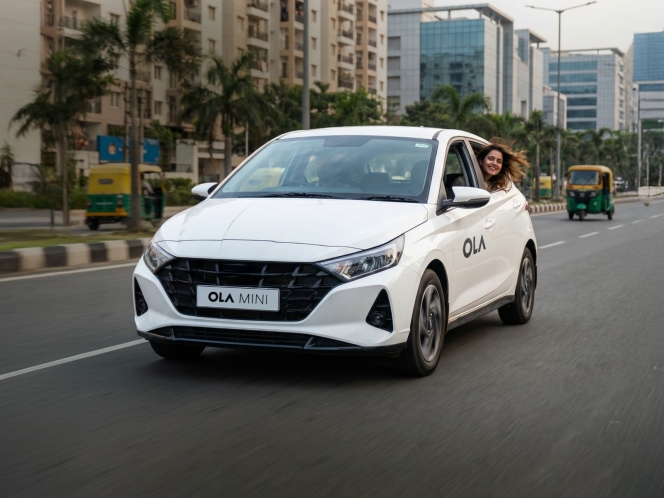
Bengaluru-based ride-hailing company Ola Consumer has launched its non-AC ride category across India, becoming the only player in the country to offer this option at scale.
The company stated that the goal is to offer customers maximum choice across various price points to meet their travel needs. The new category will also enable cab drivers to have lower fuel consumption and improve their earnings.
Ola Consumer spokesperson said: “With the non-AC category, we’re pushing the boundaries of how affordable and accessible urban mobility can be in India. Millions of people rely on daily, value-driven transport, and this offering is built entirely around their needs. The early response has been incredible and shows how strongly India wants more transparent, flexible, and fairly priced mobility. This move marks a step ahead in our mission to rethink mobility in India, and make it truly inclusive for every consumer.”


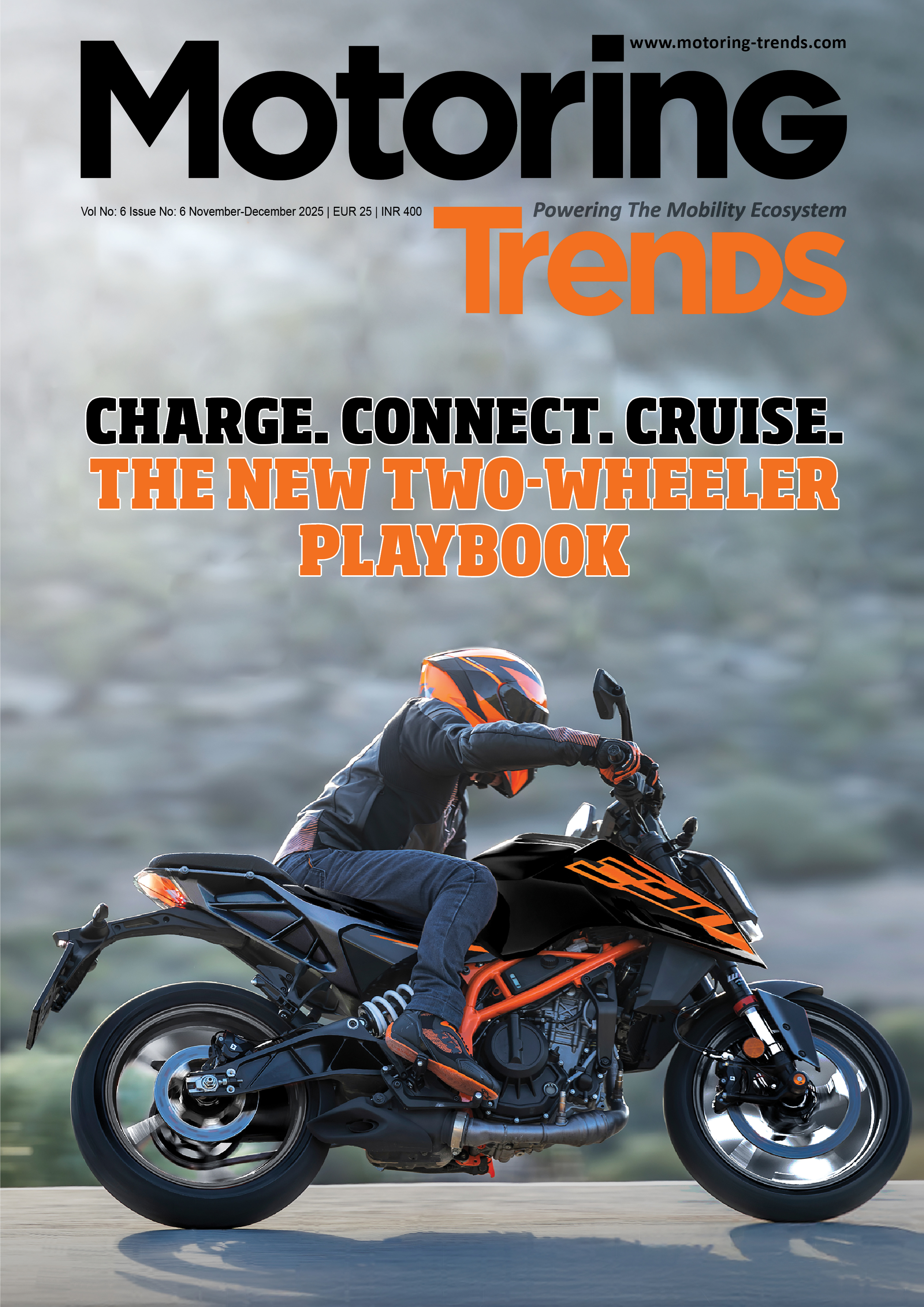

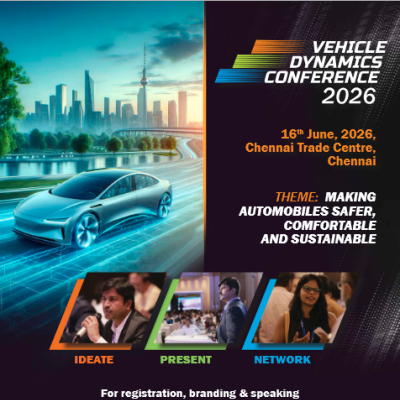
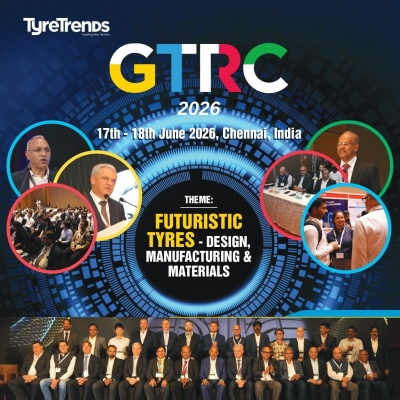
Comments (0)
ADD COMMENT